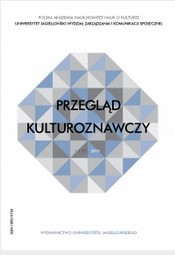Non-human Actors in Their “Strongly Possible Worlds”. Constructions of Alternative Universes in Bio Art Projects
Non-human Actors in Their “Strongly Possible Worlds”. Constructions of Alternative Universes in Bio Art Projects
Author(s): Ewelina Twardoch-RaśSubject(s): Human Ecology, Environmental interactions, Sociology of Art, Ontology
Published by: Wydawnictwo Uniwersytetu Jagiellońskiego
Keywords: matter; narrativity; strongly possible worlds; storyworld; bio art; non-human actors; intentionality;
Summary/Abstract: The article is an introduction that examines certain perspectives of new-materialist research on the ontological status of alternative universes in bio art projects with reference to the narratological concepts of possible worlds and the story world. In this context, it introduces the concept of “strongly possible worlds”, which is a complementary concept to the Jan Alber’s theory of impossible worlds. This methodological proposal is also presented in the article in reference to the latest study by Francesca Ferrando, in which the idea of “posthuman multiverse” was presented. The author also considers the role of non-human actors in the process of constructing such “in the world stories” (Bruno Latour). As non-human actors bacteria and living cells are understood, which have their own intentionality (goal-oriented behavior) and which are responsible for causal changes to the project; moreover, non-human actors are considered to be a force that affects the physical shape of storyworlds—with reference to Timothy Morton’s category of hyperobjects. The article presents two types of experiments involving the process of creation of possible worlds in bio art. The first one is conducted by the artists working with living materials, mostly tissues and cells, as the duo Tissue Culture and Art Project, Alicia King and Guy Ben-Ary and Kirsten Hudson; the other one is so called bacterial art with Sonja Bäumel’s “Expanded body”, Pinar Yoldas “Speculative biologies” and “Ecosystem of Excess”, as well as Anna Dumitriu’s artistic vision “The Romantic Disease: An Artistic Investigation of Tuberculosis” and “ArchaeaBot: A Post Climate Change, Post Singularity Life-form” as special case studies.
Journal: Przegląd Kulturoznawczy
- Issue Year: 40/2019
- Issue No: 2
- Page Range: 151-180
- Page Count: 30
- Language: English

